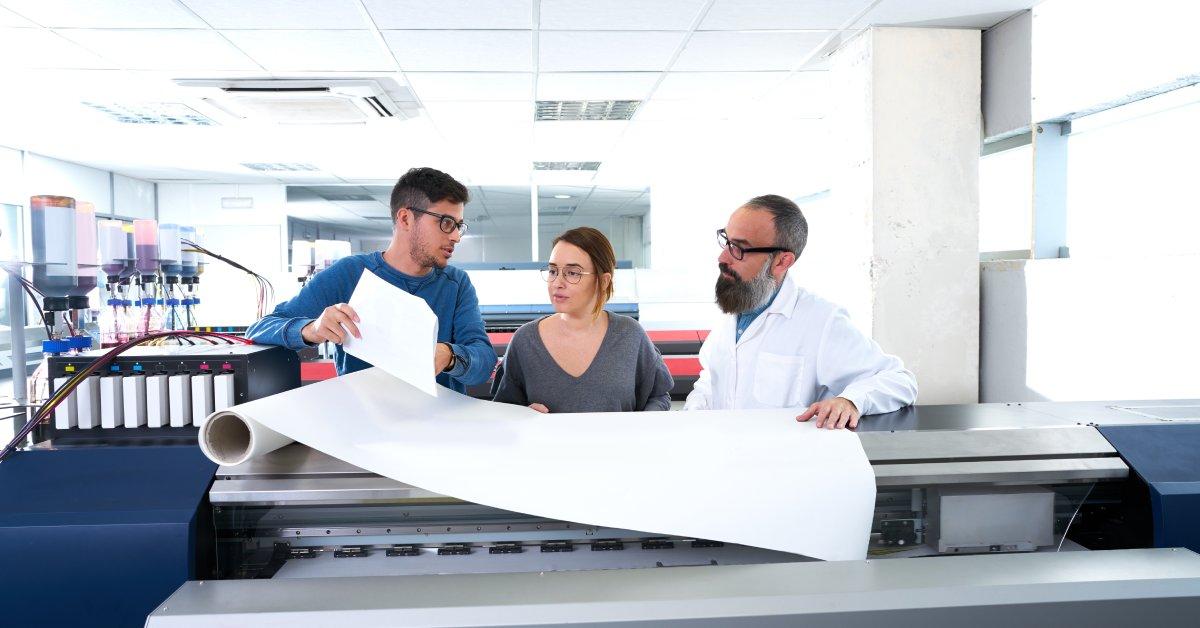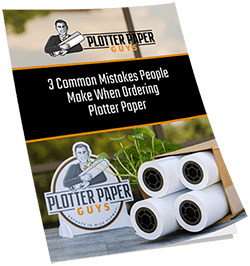Architects require printers capable of producing precise details, large-scale documents, and multiple formats. They are essential devices for transforming ideas into tangible plans. This guide has everything you need to know about selecting a printer for architectural projects. From print quality and paper size to scanning capabilities, you’ll find practical advice on making the best investment for your profession.
1. Inkjet or Laser?
First, determine whether an inkjet or laser printer suits your workflow. Inkjet printers are ideal for high-quality prints with accurate colors and gradients, making them perfect for presenting architectural concepts to clients.
On the other hand, laser printers excel in speed and cost-efficiency. They specialize in high-volume printing but might fall short in color depth and image finesse.
2. Print Size Matters
Architects work with a variety of format sizes, from A4 letter documents to large-format drawings like A1 or A0 blueprints. The printer should be able to handle your most common paper sizes. Wide-format printers are ideal for rendering posters, layouts, and detailed blueprints. It can be frustrating to compromise your creative workflow due to print size limitations, so invest in a machine designed for versatility.
Architects also need high-resolution printers to produce sharp, detailed prints for presentations and client reviews. Look for models with multiple ink cartridges to achieve accurate color reproduction, especially for complex designs. Large format printers have fast print speeds that can save time on large projects without sacrificing quality.
3. Color Accuracy and Printing Precision

Accurate color reproduction and precise lines are critical for architectural drawings. Use a printer with color management and high print resolution, such as 2400 dots per inch (dpi) or more. New Canon printers excel in precision and color fidelity. Advanced features like pigment-based ink also reflect the detailed visions you create for your projects.
Accurate printers must handle large format prints smoothly, especially for detailed blueprints or floor plans. Look for models that support multiple paper formats, like photo paper or heavy cardstock.
4. Print Speeds for Tight Deadlines
Time sensitivity is often part of an architect’s workflow, so print speed matters. Review the printer’s specifications to understand its pages per minute (ppm) capacity.
For large formats, check its speed in square feet per hour. Look for printers with minimal warm-up times to reduce delays. Verify that the printer can handle heavy workloads without frequent maintenance interruptions. Consider models with automatic feed and finishing options to streamline large projects.
5. Connectivity Options
Modern printers come with advanced connectivity features. Wi-Fi and Ethernet connectivity allow your team to print from almost anywhere within the office. Bluetooth and cloud compatibility further simplify the workflow.
Many models now support mobile printing, easily sending documents from your smartphone or tablet. Some printers also offer voice-activated commands.
6. Look for Multifunction Capabilities
If you have limited space or prefer a versatile tool, consider a multifunction printer (MFP). It can print, scan, and copy from a single device. MFPs are especially helpful for digitizing hand-drawn sketches or printed documents. Some models also include advanced scanning capabilities to store or share high-resolution documents.
7. Ink and Cartridge Costs
Don’t overlook the long-term costs of consumables like ink and toner. Upfront printer costs are tempting to focus on, but regular operating expenses can quickly add up. Familiarize yourself with ink or toner cartridge replacement costs and the printer’s estimated output to determine the true cost of ownership. Printers offering XL cartridges or high-yield toners are a better choice for frequent printing while remaining cost-efficient.
Consider printers with subscription services for ink or toner, as they can lower costs over time. Check if the printer supports third-party cartridges to save money on replacements, but review your warranty terms if you use off-brand consumables.
8. Software Compatibility
Make sure the printer integrates effortlessly with your existing software stack. CAD software typically has detailed requirements.
Check for print drivers or plug-ins provided by the manufacturer for seamless interfacing. Print management software can also offer helpful analytics and optimization tools for better efficiency.
It’s important to know the file formats your software uses, such as .dwg or .rvt. Confirm that the printer can handle the resolution and scale required for detailed design prints. Look for compatibility with cloud-based tools to enable remote printing and collaboration.
9. Evaluate Build Durability

Printers used frequently in professional settings need to withstand constant demands. Look for robust materials and a high monthly duty cycle, which indicates the number of pages it can handle each month without overloading. Printers with advanced paper handling options, like multiple trays or high-capacity feeders, are ideal for high-demand environments. Durable components lead to fewer interruptions and repairs.
Plotter Printer Guys offers professional models tailored to these needs and the materials that pair with them. Our teams also specialize in reliable customer support for easy access to replacement parts.
10. Ergonomics and User-Friendly Design
A compact yet intuitive design is always preferable in a busy workspace. Note how easy it is to load paper, replace cartridges, and access printer settings. Additionally, a clear touchscreen interface and straightforward options contribute to ease of use.
An ergonomic layout saves valuable desk space and keeps your workspace organized. Look for printers with automatic duplex printing to save time and paper. Consider models with wireless connectivity for seamless printing from multiple devices.
11. Warranty and Support
You don’t want printer issues to halt your projects. Purchasing from a manufacturer or dealer offering strong warranties and excellent customer service can save you in a pinch. Look for extended warranties or support packages, especially when acquiring sophisticated models with advanced features. You should also check if the manufacturer offers on-site repair services for quick resolutions. Prioritize brands with a proven reputation for reliability and durability.
Make Your Decision
Choosing the right printer for your projects can be straightforward with a few considerations in mind. Clearly defining your needs will guide you toward a smart investment. Whether it’s an inkjet for vivid visuals or a laser printer for crisp schematics, this printer selection guide for architects has you covered. Advanced equipment offers precision, speed, and versatility, making it an excellent addition to an architect’s workspace. If you’re looking for expert input, Plotter Printer Guys is a trusted supplier of high-performing printing solutions designed for architects.






